The best acne scar treatments according to dermatologists

Acne, on its own, is highly frustrating and can take a severe toll on our confidence. Unfortunately, even after active acne is controlled and cleared with the right skincare products, we're often left with a long-term reminder of the pimples that were once there—acne scars. While post-acne dark spots and hyperpigmentation can be treated successfully with a dark spot remover, treating real, textured acne scars is challenging. That said, it is certainly possible! Read on to learn more.
What causes acne scars?
Acne scars result from active acne inflammation in the dermis (i.e., the thick layer of living tissue below the epidermis, which gives strength to the skin). The acne scar is created by the wound trying to heal itself, resulting in the overproduction of collagen fibers in the area where the pimple once was. While most pimples will heal independently without leaving a permanent scar, cystic acne lesions are more likely to leave behind a scar due to the more significant inflammation and damage to the dermis. Additionally, popping and picking pimples dramatically increase the risk of scars due to greater damage and disruption to the healing process.

What are the different types of acne scars?
Hyperpigmentation: The term "acne scar" is often misused when referring to post-inflammatory hyperpigmentation (PIH). These are post-acne marks that aren't technically scars but rather dark spots left on the skin after a pimple heals. Depending on skin tone and severity, they can range in color from dark brown to reddish to pink but tend not to be textured (pitted or raised).
Atrophic Scars: These depressed or raised scars can be divided into different groups:
- Icepick Scars: Deep, narrow scars that appear like pinpoint pits (deeper than they are wide).
- Rolling Acne Scars: Broad, inconsistent depressions that give the skin a wave-like appearance.
- Boxcar Scars: Sharply defined, pitted scars that are depressed with steep borders. These are usually round or oval and tend to appear on the temples and the cheeks. Boxcar scars are more difficult to treat than other types of acne scars.
Hypertrophic Scars: Raised, hard-to-the-touch scars caused by the overproduction of collagen during skin healing. Keloid scars are similar but extend beyond the size of the original wound.
What are the best office treatments for acne scars?
Unlike hyperpigmentation, which can be treated with prescription and over-the-counter creams, true scars require in-office treatments from a dermatologist. Several treatment options help minimize the appearance of acne scars and even remove them altogether.
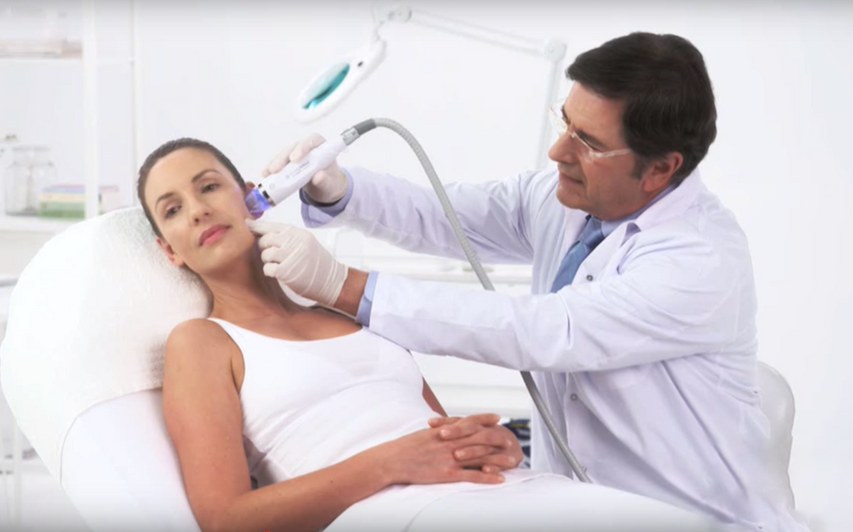
Fractional Microneedle Radiofrequency for Acne Scars
Fractional Microneedle Radiofrequency (AKA Fractional RF Microneedle) is one of the most effective non-surgical treatments currently available to treat depressed acne scars. This treatment combines two highly effective skin rejuvenation treatments—microneedling and radiofrequency—for even greater efficacy with minimal downtime and side effects. It works by inserting very thin, ultrasharp, gold-plated needles into the skin's dermis (microneedling). Once the needles reach a certain skin depth (variable—0.25-5mm), they produce mild heat (radiofrequency), stimulating new collagen production, and ultimately filling out depressed scars. With minimal side effects (red skin for a few hours), patients can return to school or work as early as the next day with no noticeable treatment signs.
Fractional Laser Skin Treatments for Acne Scars
Fractional Laser Resurfacing (also referred to as a "laser peel") is another treatment for acne scars that works by directing pulsating beams of light (lasers) at the skin. There are two main types of laser resurfacing: Ablative and non-ablative fractional lasers.
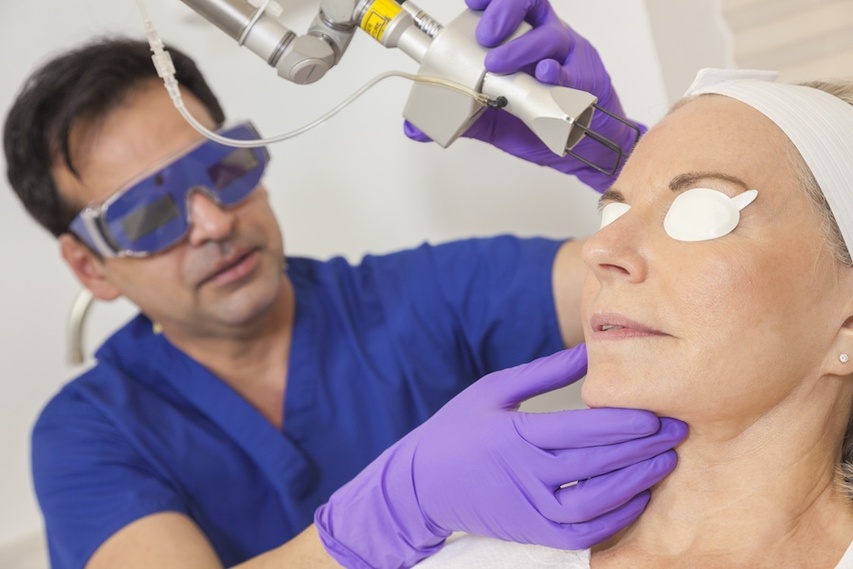
Ablative laser resurfacing
- How it works: This treatment works by resurfacing (or removing) the outer layers of skin. Non-ablative lasers create changes in the dermis without causing damage to the skin's surface. Carbon dioxide lasers are the most common ablative lasers used to treat acne scars (CO2 Laser Resurfacing). It works by creating micro burns in the skin that are intended to trigger new collagen buildup.
- Types of ablative laser resurfacing: Carbon dioxide (CO2) laser, Erbium laser.
- Results: The usual result of fractional ablative laser treatment is that "new" skin is smoother, atrophic scars are reduced in-depth, and the overall look of scarring is softened. The results and efficacy are usually similar to microneedle radiofrequency but with more pain, downtime, and risk for post-treatment hypo and hyperpigmentation.
- Side effects: After ablative laser treatment, the skin generally heals within two weeks but can remain red for some time after healing. The redness fades over several weeks to several months. More severe side effects are possible but rare.
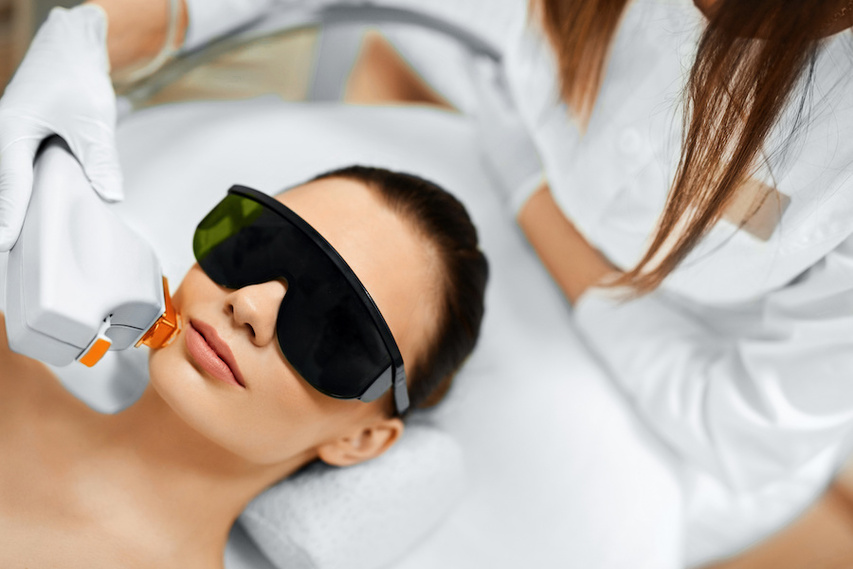
Non-ablative laser resurfacing for acne scars
- How it works: Non-ablative laser resurfacing works by heating the underlying skin tissue to stimulate new collagen production without causing damage to or removing the top layer of skin.
- Types of non-ablative laser resurfacing: Intense Pulsed Light (IPL), Pulsed Dye Laser, Fraxel, CoolTouch, N-lite.
- Results: While non-ablative lasers can improve acne scars, they are less effective than both microneedle radiofrequency and ablative lasers at treating acne scars. However, Pulsed Dye Lasers (one form of non-ablative lasers) can be used to improve raised scars and keloids.
- Side effects: Fractional lasers have a few probable side effects. However, treatments are usually significantly less painful than other treatment options. The popular "Fraxel" laser skin resurfacing comes in both ablative and non-ablative formats.
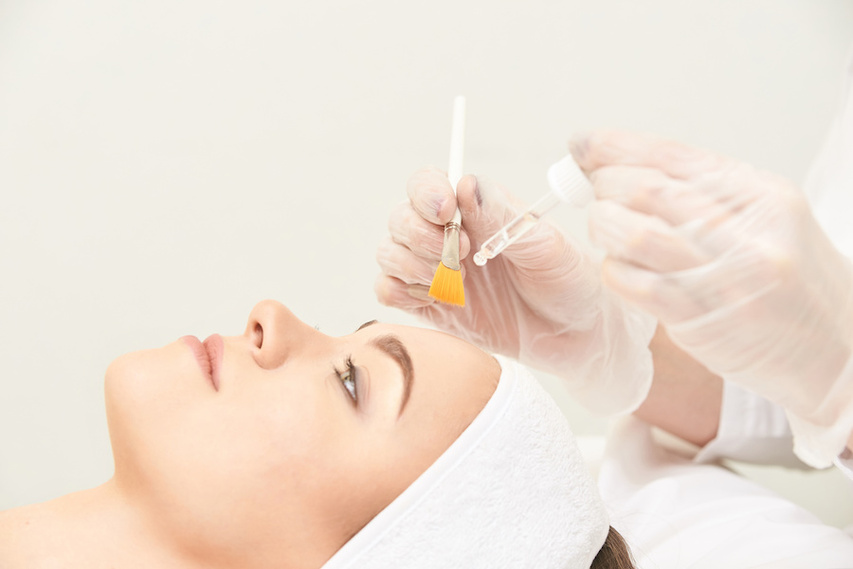
Chemical Peels for Acne Scars:
Moderate and deep chemical peels improve the appearance of acne scars using a chemical solution to remove the old skin's outer layer. The new skin that replaces it is usually smoother with improved, more even color and texture.
- Results: Superficial peels with glycolic acid, lactic acid, or other alpha and beta hydroxy acids can improve skin texture and fade dark spots but will not significantly affect depressed acne scars.
- Side effects: Light, superficial chemical peel: After a light chemical peel, patients typically experience a reaction similar to sunburn in the treatment area with mild redness lasting from 3-7 days. Moderate to severe chemical peels: After moderate and severe peels, patients can expect significant swelling and blisters that will crust, turn brown, and peel off within seven to 14 days.
- Additional risks: Temporary or permanent change in skin color is possible following a chemical peel (particularly for people with darker skin tones). These treatments can also cause the reactivation of cold sores and, in rare cases, cause more scarring.
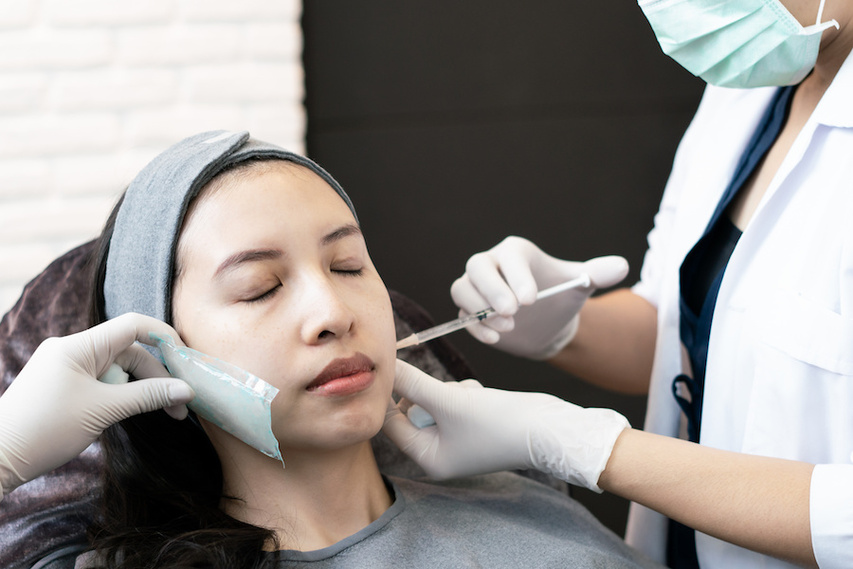
Dermal fillers for depressed acne scars
Dermal fillers, similar to those used for wrinkle reduction or lip plumping, can also be used to treat depressed acne scars, which do not respond to the above treatments for acne scars.
- How it works: Dermal fillers help reduce the appearance of depressed acne scars by inserting a needle underneath the scarred area and depositing the fluid of choice until the scar depression is filled. The amount of filler used will vary and depend on the number of scars being treated and the scars' severity. The type of filler will depend on the recommendation of your provider.
- Types of dermal fillers for acne scars: Hyaluronic acid fillers such as Juvederm or Restylane are commonly used in this application.
- Results: The results of acne scars dermal filler treatment are temporary and typically last 3-4 months. In addition to the immediate, short-term benefits in the appearance of acne scars, dermal fillers also have long-term benefits as they can help break up the scar tissue and stimulate collagen production, minimizing the appearance of scars long-term.
- Side effects: Injection site swelling, redness, and bruising are possible but typically subside. While allergic reactions are rare with dermal fillers used today, they are possible. Another rare but possible risk is infection at the injection site.
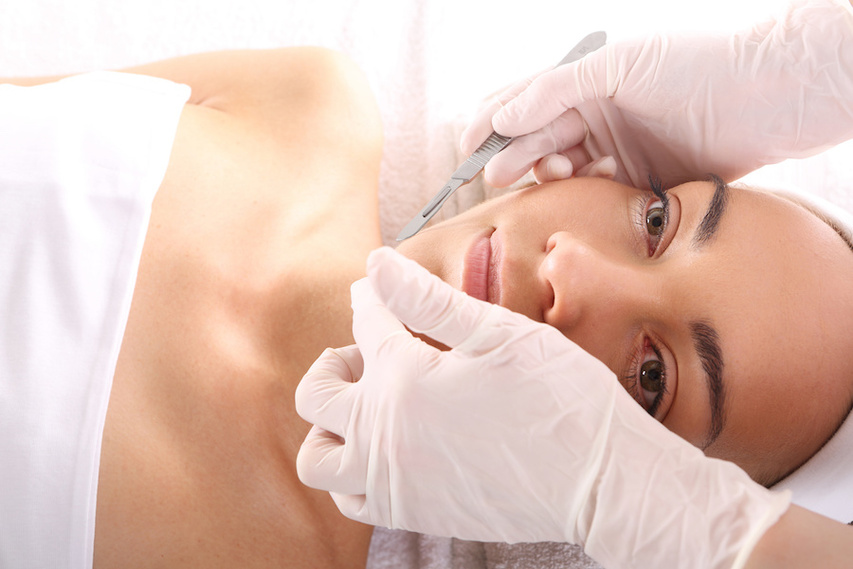
What is the best surgical treatment for acne scars?
Subcision (cutting under the scar with a scalpel): One of the causes of depressed scars is collagen fiber that pulls down the skin's surface. In a subcutaneous incision (AKA subcision), a needle or small scalpel is inserted to run parallel to the skin's surface. Once these bands have been released, the skin's surface lifts, smoothing the skin surface's appearance. This procedure is invasive, requires local anesthesia, and is more costly than microneedle or laser treatment.
What are the best treatments for hyperpigmentation?
While the acne scar treatments listed above can also help with dark spots and hyperpigmentation, they are usually unnecessarily invasive and costly for those most worried about dark spots and less about textured scars.
The gold standard prescription formula for the treatment of hyperpigmentation is the Kligman formula, which includes hydroquinone (to fade dark spots), hydrocortisone (to reduce the irritation associated with higher percentages of hydroquinone), and retinoid (to enhance the penetration of the hydroquinone).
While this formula has been the #1 dark spot treatment for decades, it does have its drawbacks. Due to the high percentage of hydroquinone in the formula, it can (in rare instances) result in the skin's darkening. Also, due to the inclusion of hydrocortisone, it is not suitable for long-term use. Finally, as a prescription product, it requires a dermatologist visit, which can be cost-prohibitive and difficult.
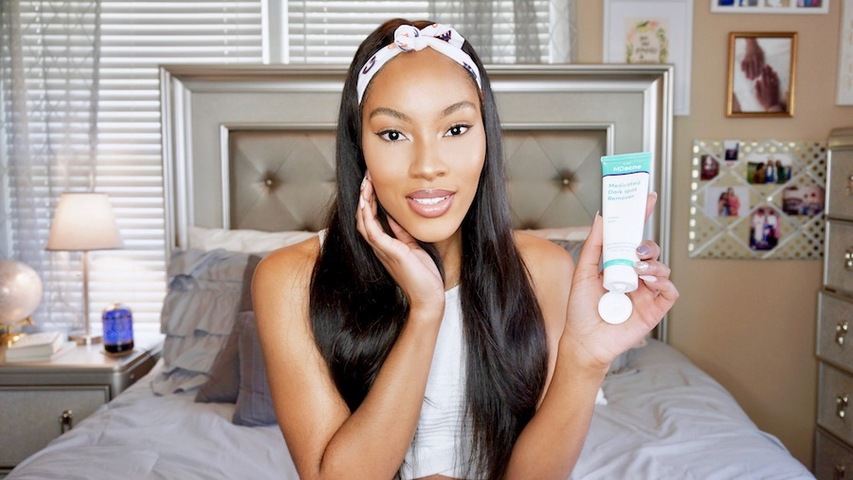
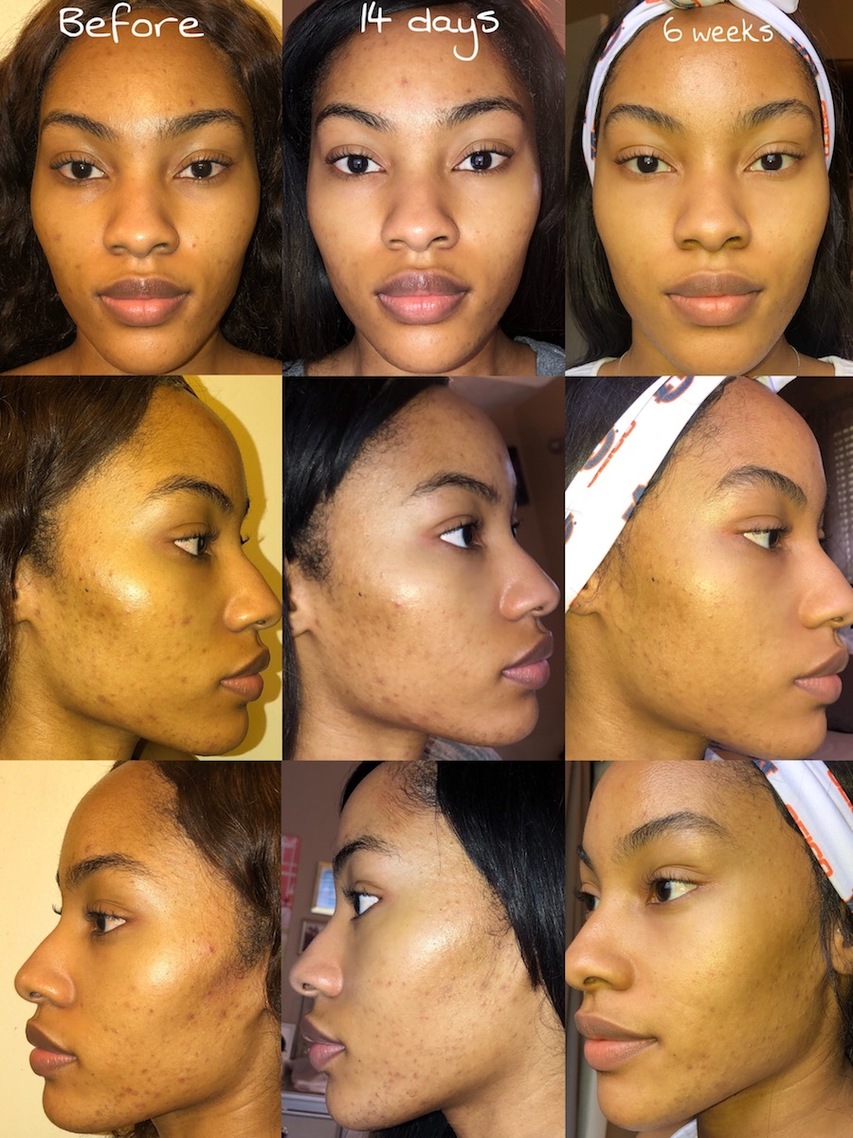
That's why we created the MDacne Advanced Dark Spot Remover. The main active ingredient of the Advanced Dark Spot Remover is Arbutin. Arbutin, a precursor of hydroquinone, is naturally derived from the leaves of bearberry. It decreases the overproduction of melanin in post-acne and sun-induced brown spots and scars. The Advanced Dark Spot Remover was specially formulated for sensitive and acne-prone skin. It includes retinol, Alpha, and Beta hydroxy acids, providing a safe and effective dark spot treatment for all skin types and colors. However, like most other topical treatments, it will not affect true acne scars much.
How to prevent acne scars from forming?
Commit to effective topical acne treatment: The best way to prevent new scars and hyperpigmentation from forming is to prevent the inflammation (i.e., acne breakouts) in the first place. This means you need to start a medical-grade acne treatment program ASAP. Do not wait until you are desperate or settle for mild acne. You can use a program like MDacne to identify the best acne treatment products for you or visit your local dermatologist.
What is the best cleanser for people with acne scars?
The best cleansers for people with acne scars contain a low percentage of salicylic acid (BHA) or alpha hydroxy acids (AHA). This type of medicated acne cleanser has a mild exfoliating effect that improves skin brightness and glow.
What is the best moisturizer for people with acne scars and post-acne dark marks?
Cleansing the skin should always be followed by a moisturizer, preferably an active one. Niacinamide is one of the best active ingredients for people with acne-prone skin and post-acne scars. Niacinamide is regarded as one of the top skincare treatment ingredients. It minimizes and tightens enlarged skin pores, strengthens the skin's natural protective layer, and helps balance oil production. It also improves uneven skin tone, reduces skin redness, and diminishes skin dullness.
Applying niacinamide around the eyes reduces the appearance of under-eye dark circles and wrinkles on the sides of the eyes (crow's feet). Niacinamide-based moisturizers are great for all skin types, including sensitive or rosacea-prone skin.
Niacinamide has been shown to increase the production of ceramides. Ceramides, found in our skin's outermost layer, help the skin form a healthy barrier that keeps water in and toxic environmental elements out. Clinical studies have also shown that application over several months can reduce skin sallowness and lead to fresher, younger-looking skin. In one study, researchers found that skin treated with a moisturizer containing 5% niacinamide showed a significant reduction in hyperpigmentation with lightening of dark marks and age spots.
What are the best treatment creams for people with scars?
Retinoids, derivatives of vitamin A, are known to exfoliate and remove dead skin cells from the top layer of the skin and increase cell turnover in the epidermis. Retinoids can also help slow the loss of collagen fibers and promote new collagen production in the dermis, increasing the skin's strength and elasticity. Retinoids can also make your epidermis thicker, improving skin texture.
To prevent post-acne scars, a topical scar cream with peptides and ceramides can speed up the healing of blemishes, strengthen the skin barrier, reduce inflammation, and improve texture in newer scars.
What are the best sunscreens to prevent hyperpigmentation and dark marks?
Unprotected sun exposure increases the amount of pigment in the skin and can cause pigmented acne scars and post-acne dark marks. To prevent those dark marks from forming, one needs to control active acne with an effective topical or oral anti-acne treatment. In parallel, it is recommended to use an oil-free sunscreen with SPF 30. The best sunscreen for acne or post-acne dark spots is water-resistant, which will stay on your skin when sweating. Some new sunscreens contain, in addition to SPF, plant extracts with antioxidants like green tea and vitamin E, and ingredients that help fade post-acne dark spots like licorice and vitamin C.
What are the best clay face masks for people with scars?
Using a pink clay mask 1-2 times per week can be a good addition for people with acne-prone skin and a tendency for acne scars. These masks can help with acne breakouts, reduce skin redness, and improve skin texture and brightness by absorbing dead cells and excess sebum from enlarged skin oil glands. MDacne's pink clay mask contains, in addition to the pink clay, ingredients that can help calm the skin and reduce the appearance of post-acne dark marks and scars. By mildly exfoliating the skin, pink clay masks are a great way to provide a fresh, natural glow to acne-scarred skin.
These ingredients include, among others, a non-irritating retinoid that is converted in the skin to potent, active retinoic acid and rosehip, which helps build healthy new collagen fibers to enhance skin regeneration and reduce the appearance of scars. MDacne's pink clay acne masks also include hyaluronic acid that enhances moisture content, keeping the skin hydrated while revitalizing its outer surface layers for a smoother, healthier, radiant appearance.
References:
Acne Scarring—Pathogenesis, Evaluation, and Treatment Options
Treating Acne Scars: What's New? The consensus from the Experts
Update on acne scar treatment
If you have any other acne treatment questions, scars, or hyperpigmentation, please email us at support@mdacne.com.
To find the right acne treatments for your unique skin, take the free skin assessment by clicking here.



